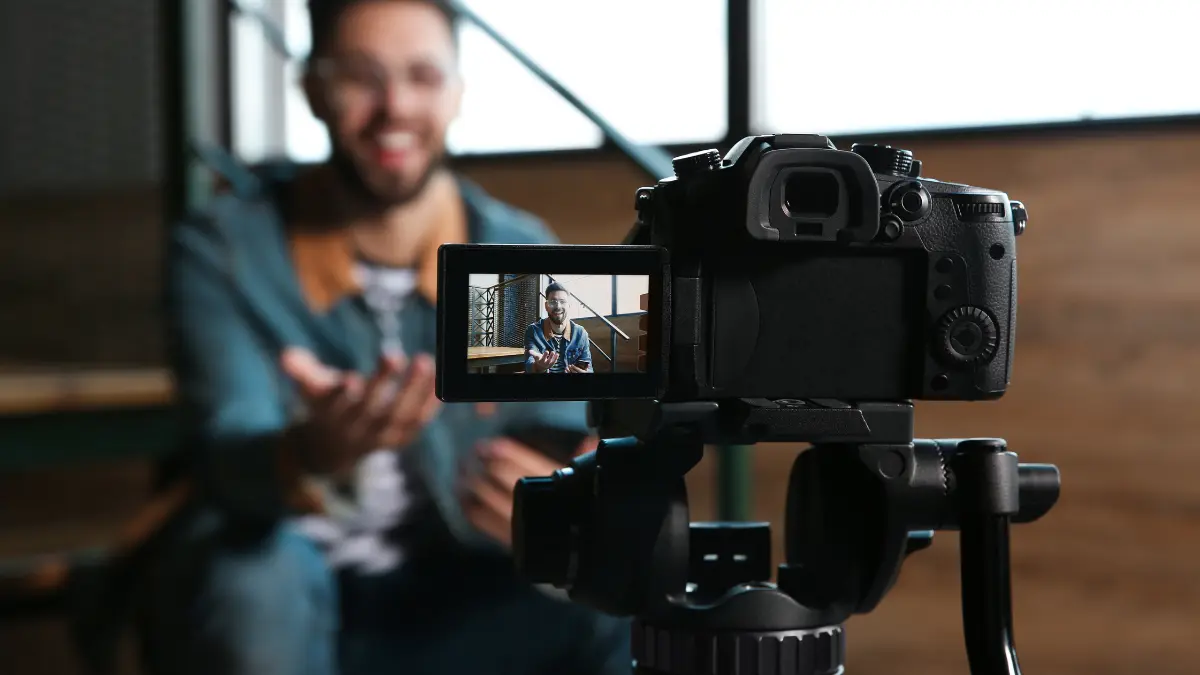Starting your own business can feel like you’re shouting into the void. You’re filled with ideas, enthusiastic about the possibilities, and ready to just get started and help people. But how can you make sure they actually notice you?
Hint: It doesn’t take a massive ad budget or flashy website. It’s all about connection, and few tools build connection faster and more effectively than short-form video.
Whether you’re a service provider, a creative entrepreneur, or a solo founder determined to bootstrap your way to success, it’s time to lean into the powerful but often overlooked asset … your story.
Storytelling isn’t just for Hollywood blockbusters
People don’t buy logos. They buy trust, identity, and human stories. You are your brand’s best storyteller and short-form videos are your platform.
When you do it right, short videos let you:
- Show who you are, not just what you sell
- Build trust, not just awareness
- Deliver value without pitching anything
Video makes you memorable because it makes you human. Why does that matter? Well…
You have 3 seconds to stop the scroll
The digital audience has the attention span of a goldfish, or worse. If your video doesn’t hook them immediately, it’s over. That’s why short-form video is so powerful. With a snappy opening, a clear message, and an authentic delivery, you can cut right through the noise and get them to stop mindlessly scrolling.
Think about the hooks that may have caught your attention:
- “Here’s how I landed my first client with zero followers or contacts.”
- “Think you’re ready to launch? Don’t make this mistake…”
- “What I wish I knew before…”
You’re building relationships, not pitching
There’s no more hard sell. People want relatability, not rehearsed scripts and polished ads. When you share small moments of your journey (your wins, fails, and awkward attempts), you build real connection. Short-form video lets you show up like a friend in someone’s feed, not a salesperson that wants something from them.
The reality is, people want to support people they like, and that takes a two-way relationship.
Your story makes your brand sticky
No matter how great your service or product is, someone else out there offers something similar – maybe even better. But you know what they don’t have? Your story.
Storytelling creates memory. Maybe you tell your followers about a hilarious fail you had when you first started, and how you dusted yourself off to make it work. Or you talk about your worst pitch and the client you thought you lost forever, only to end up building a great long-term partner.
When the audience says, “I feel like I know you,” that’s brand equity building up.
Quick frameworks for short-form videos that connect
You don’t need a big production team to create the content you want. What you do need is a simple strategy and a little structure.
The 4 core elements of a short video story
So, you’re not a natural storyteller. Fortunately, all stories have these common elements:
- Plot: What’s the moment or conflict? What actually happens?
- Purpose: Why does the story matter?
- Person: Who is the story about? You, a client, the audience?
- Place: What’s the setting or situation that makes it feel real?
Even a 20-second video can have a full arc if you plan properly.
Stick with one message
You can’t fit your whole brand story into 60 seconds. You’ll lose people. Instead, focus on one idea, like why you stopped offering hourly rates, how one DM turned into a winning client, or what burning the candle at both ends taught you about work-life balance.
Learn the story arc
Humans are wired for storytelling, but they need a familiar structure:
- Problem and solution: This is a simple premise, like “here’s the challenge and how I fixed it.”
- Before and after: Most customer success stories use before and after to show transformation.
- Question and insight: This is for thought leadership and an opportunity to present a common industry question and your insights as an industry leader.
Don’t forget emotion
You may think that business is all about logic and practicality. That matters, sure, but emotions still play into decision-making, and they need to be part of your stories.
This doesn’t mean you need to cry on camera or anything. But you should try to make your audience feel something. For example:
- Highlight frustration: “I tried everything to grow my business online and got nowhere.”
- Hope: “Here’s what finally clicked”
- Pride: “My client went from struggling and invisible to in-demand and fully booked.”
- Inspiration: “If I can do it, so can you.”
Feelings inspire action. Use them to your advantage.
Story too big? Make it a mini-series
Some stories are just too much for a bite-sized video. Instead, turn them into a mini-series that can shine.
For example, split a brand story discussion into mini videos about why you started, the challenges you faced, and the breakthrough moment that made it all possible.
Be smart about channels
Different platforms serve different purposes. Don’t blow your whole budget and spread yourself thin. Start where your audience is already spending their time.
TikTok is ideal for creative storytelling, relatable insights and wins or fails, and viral marketing campaigns. Instagram Reels, while similar, is good for personal storytelling, behind-the-scenes content, and brand building. If you want to share educational content, product demos, tutorials, and thought leadership, YouTube Shorts and LinkedIn videos are perfect. Pick a platform that fits, then expand and test new platforms and audiences.
Measure what matters
Think video metrics are just about views? Sure, they matter, but they’re not the only thing you should track.
- Watch time: Are people finishing your videos or dropping off?
- Comments: Are you getting a lot of comments and conversation, or just crickets?
- Shares: Do people want to pass your message along?
- Saves: Is your content valuable enough for people to save for later viewing?
- Clicks: Is your audience taking the action you want?
These metrics help you get a full picture of how your videos are performing. For example, If you’re not getting full views, you could be rambling or boring the viewer. If you’re not getting clicks, you may need more compelling messaging and CTAs.
You don’t need perfection, just authentic stories
Don’t wait for better lighting, 1,000 followers, or something to inspire you. Everything you need is at your disposal: your experience, perspective, and heart behind your business. So hit record and tell everyone who you are, what you care about, and how your business can help – one short video at a time.
These views are made solely by the author.




